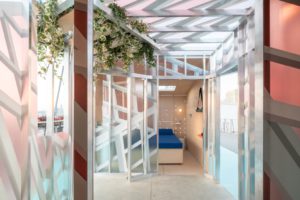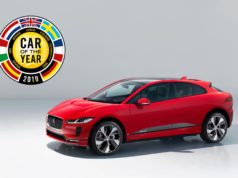MINI presents the MINI LIVING Urban Cabin in Los Angeles at the LA Design Festival. The micro-apartment concept was developed in an unused attic space in downtown LA in collaboration with local architect duo FreelandBuck.
The Urban Cabin in LA is now the third interpretation of a concept developed by MINI LIVING last year; there are to be five in all. The Urban Cabin provides temporary living space with a high degree of flexibility and lots of possibilities. And that is on a surface area of just 15 m2. One particular design focus is the local identity and culture of the specific location in each case. After London, New York City and now Los Angeles, there are plans to implement the project in Beijing and Tokyo during the second half of the year.
In pursuing this concept, MINI is taking the first step towards a global network of creative apartment solutions. The idea in it is to make residents feel at home, regardless of the city they live in.
“We’re working on our own very distinct interpretation of co-living. Our aim is to enable a genuine sense of community, opening doors and creating public space”, explains Esther Bahne, Head of Strategy and Innovation MINI. “Our installations and visionary formats seek to explore a whole new range of possibilities in the creative use of space, and we’re now putting what we’ve learned into practice in the form of real-life construction projects. In Shanghai we’re currently working on our first hub with more than 50 apartments complete with shared and public space: this is due to open in April next year.”
The Urban Cabins anticipate the real-life MINI LIVING buildings in terms of their concept and design.

Big life. Small footprint.
The MINI LIVING Urban Cabin offers as much living quality as possible within a small space. They are of three formal elements. There two outer modules. One is the living and sleeping area on one side and the bathroom and kitchen on the other. These two elements are the work of the MINI LIVING team. The third part is an experiential space with the character of an installation. It is defined by MINI as an empty space. And for each cabin, a local architects’ bureau is invited to fill it out. The theme selected always has to be relevant to the specific location. There are two living areas with a perforated metal facade on the outside.
The transparency, lighting, spatial impression and character change during the course of the day. On the inside, the look is a combination of wood with surprising, modern materials. “Creative use of space” – the core MINI principle – is reflected down to the last detail in smart, space-saving solutions: push, fold, rotate and fold mechanisms enable various use scenarios for day and night. Portholes, windows and fold-out shelves also allow residents to make flexible use of private and shared space: the Urban Cabins open outwards – one of the fundamental principles of MINI LIVING.
The approach of the cabins not only seeks to address the decrease in available living space as well as the rise in prices and the drop in living quality that this involves. But it also seeks to provide a corrective for the global spread of more homogeneous architecture and the resulting loss of cultural identity and variation.

Next stop: Los Angeles
Los Angeles residents attach great importance to the connection to the natural environment.
The MINI LIVING Urban Cabin in LA addresses this in a downtown setting by providing an urban oasis. In the cabin’s experiential space, architect duo FreelandBuck from Los Angeles created a hanging garden along with perforated areas to let in plenty of air and light. The duo also designed two nested cubes that produce a kaleidoscopic visual effect. The result is an atmospheric interplay of light refractions and visual illusions – a kind of trompe l’oeil. The outwardly protruding hanging garden combined with this suggestive play of light conveys to visitors the sense of being in the countryside – even though it is in the middle of the city.
Looking ahead: the global village
After the MINI LIVING Urban Cabins in London, New York and now LA, the concept will have further stops this year. The next ones will be at House Vision in Beijing and Design Art in Tokyo. In both cases, local architects will be contributing their individual perspective. The five Urban Cabins provide a foretaste of the various functions and spaces in the MINI LIVING building, the first co-living project in China which is due to open in Shanghai in 2019. Together these form a global village of MINI LIVING initiatives that map out a potential pathway to the future of urban living.
The MINI LIVING Urban Cabin is on show from 7 to 10 June 2018 at the LA Design Festival.
Share the road. Share the excitement. Uncover the new #MINI3Door: #ExploreMoreCorners pic.twitter.com/RXU5SRUHot
— MINI (@MINI) June 8, 2018

































